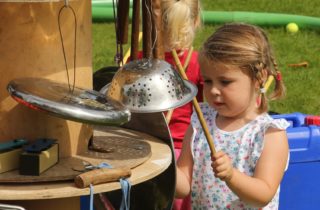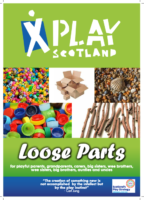
Introducing simple, everyday objects can improve creativity, boost social and problem-solving skills and support inclusion.
“A ‘loose parts’ toy, is open-ended; children may use it in many ways and combine with other loose-parts through imagination and creativity. Nature, which excites all the senses, remains the richest source of loose parts.”
Richard Louv, Author
If you any ideas to share, let us know at info@playscotland.org
Loose Parts Play – A Toolkit
The aim of the toolkit is that more children will have access to loose parts play and that adults in the play, early years and education sectors will feel more comfortable and confident about introducing loose parts play within their settings.
This updated edition offers:
- a greater focus on skills that help adults to facilitate loose parts play sensitively and respectfully
- more starting points to link loose parts play with education, curriculum, wellbeing, social and care contexts
- a wider range of ‘snapshots’ and case studies illustrating real-life application of loose parts play theory in the field
- more pages to print, photocopy and share
Who is the Toolkit for?
The Toolkit will be useful for:
- people working directly with children and teenagers, in many types of setting
- people in management and leadership roles
- play and community associations and networks
“When children interact with loose parts, they enter a world of “what if” that promotes the type of thinking that leads to problem solving and theoretical reasoning. Loose parts enhance children’s ability to think imaginatively and see solutions, and they bring a sense of adventure and excitement to children’s play”.
(Dale and Beloglovsky)







